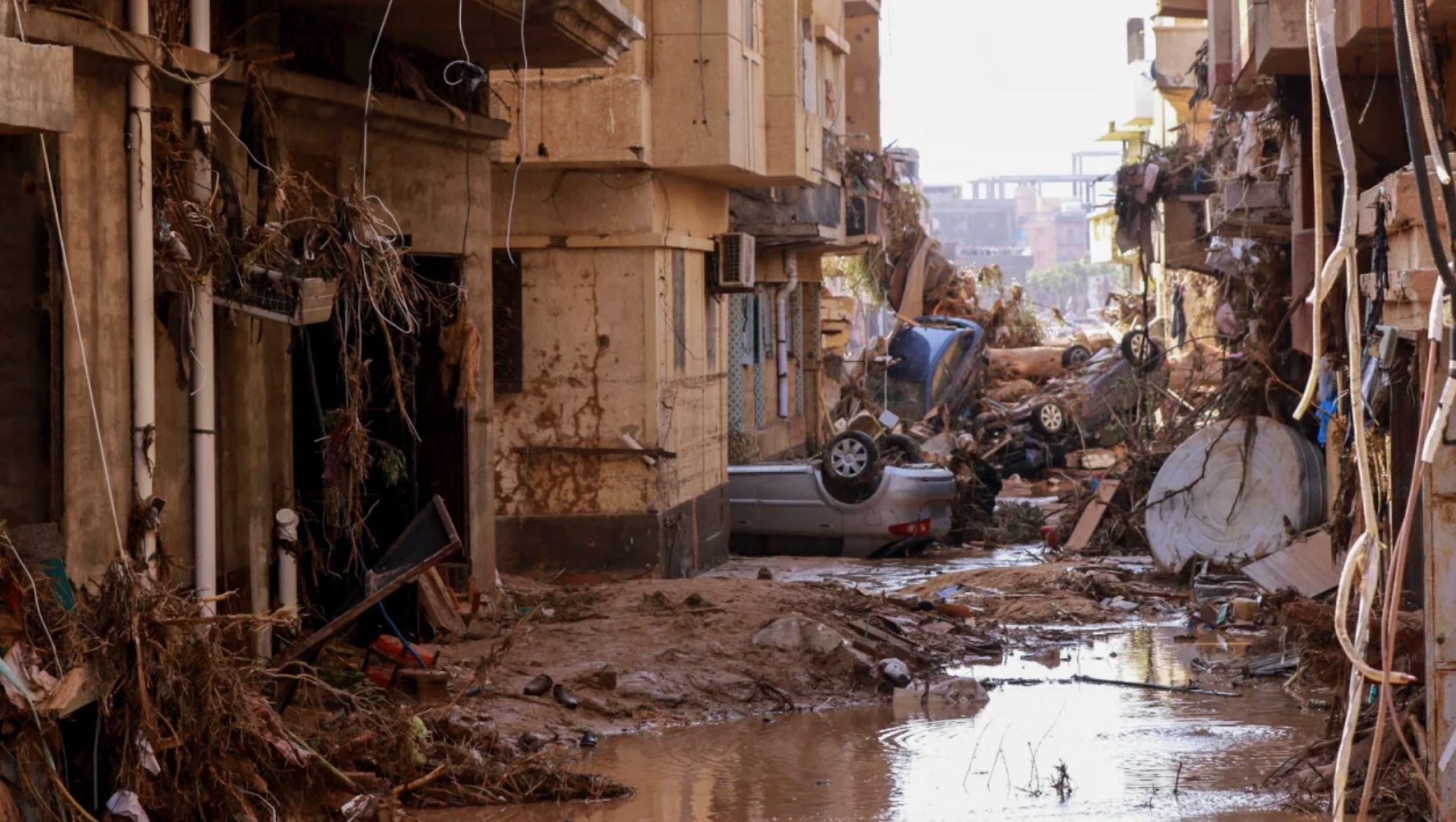Deadly Floods in Libya: Byproduct of Climate Change & Neglected Infrastructure
“Overturned cars lay among other debris caused by flash floods in Derna, eastern Libya, on September 11, 2023.“ Source: CNN
Early last month, a catastrophic flood hit Derna, Libya, killing over 5,000 people and leaving thousands missing. The flood was triggered by Storm Daniel, which had characteristics of both hurricanes and typhoons. Climate change likely intensified the devastating floods caused by the storm. Rising sea surface temperatures injected energy and moisture into the storm, escalating its winds and rainfall. Although sea surface temperatures were not exceptionally high, they were sufficient to enhance and fuel such storms.
The severity of the floods in Libya was compounded by the country's political and socio-economic turmoil, stemming from the civil war that followed the removal of Muammar Gaddafi in 2011. International sanctions and the presence of rival governments have hindered infrastructure maintenance, including critical dams and the nation's capacity to respond effectively to emergencies.
In Derna, aging and poorly maintained dams constructed in the 1970s had not undergone maintenance since 2002, rendering them vulnerable to flood risks. This vulnerability was exacerbated by the city's inadequate infrastructure, which had been further weakened by years of conflict. Across the globe, experts stress the importance of early warnings and enhanced infrastructure preparedness to address the growing threat of climate-driven extreme weather events.
The tragic floods in Libya serve as a poignant reminder of the urgent necessity for enhanced preparedness measures, response strategies, and effective warning systems in the face of extreme weather events, especially for regions susceptible to climate change impacts. One critical aspect of this preparedness is flood risk management, as flooding is among climate change’s most pervasive and destructive consequences. Drawing from the information provided by the Substance Abuse and Mental Health Services Administration (SAMHSA) on flooding, we can further emphasize the importance of these measures:
In flood-prone regions like Libya, it is crucial to address vulnerabilities effectively across all stages of disaster response. Flood preparedness and response mandates tailored plans for vulnerable groups, including older adults, children, and unhoused individuals. These plans should encompass accessible mental health services to mitigate post-flood mental health challenges. Collaborative risk assessments involving local authorities and organizations are necessary to pinpoint high-risk flood areas.
In parallel, warning systems and outreach initiatives prioritize effective communication through robust channels, including radio, television, and social media. This approach ensures that flood risk information reaches all community members. Collaborating with community-based organizations is equally vital in disaster planning, outreach, and education, especially for marginalized communities and individuals with limited English proficiency. This partnership enhances overall disaster preparedness and response efforts.
To enhance recovery after a flood, communities can prioritize post-flood resilience, including resources for coping with trauma. Long-term planning is essential, considering future climate conditions. These measures minimize flood-related health consequences and protect vulnerable members.
Despite the complexity of climate change challenges, it is clear that improved warnings and timely evacuations could have saved lives in Libya. The rising frequency and intensity of these events due to climate change threaten global critical infrastructure, necessitating global cooperation to address this urgent issue. This tragedy emphasizes the need for comprehensive preparedness, proactive planning, and international collaboration in managing climate-induced extreme weather events.
You can make a donation here to help people in Libya.

